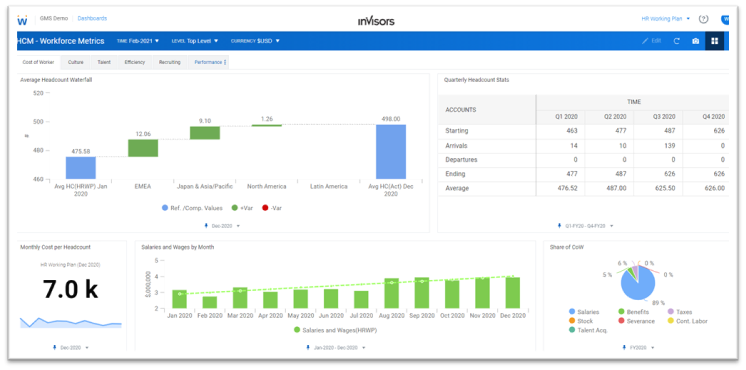Workforce expenses are typically an organization’s largest cost. Because workforce expense planning incorporates a wide variety of expense types, tracking the details to set a budget and then measuring the impact of strategic decisions can be overwhelming and error prone. Workday Adaptive Planning puts workforce expense planning within-reach, in a 9–12-week deployment time frame:
- Framework to ingest and organize expense data from any source system
- Templates to model multiple planning scenarios by different data dimensions
- Cloud based access to facilitate secure and real-time online collaboration
- Reports to publish agreed budgets and forecast adjustments
The value proposition of Workday Adaptive Planning multiplies for Workday HCM customers; The Power-of-One automates organizational data collection, making workforce expense planning easier and more accurate. Let’s explore how this powerful Workday combination transforms workforce expense planning.
See real-time data updates
Workday Adaptive Planning consumes Workday HCM data in real time to create an always up-to-date workforce expense planning budget and forecast. This ability to automatically integrate live HCM data on a designated schedule, or ad hoc as data changes, provides a single source of truth in an always up-to-date budget and forecast. Imagine the insights gained from live headcount, payroll results, benefit costs, and open positions in one consolidated view.
This real-time data collection at the worker level is referred to as a “bottoms-up” approach which is impossible to accurately maintain without automation. Its accuracy gives instant credibility to the workforce expense planning process while facilitating conversations that drive strategic alignment. Once a workforce expense planning model is approved, it can be locked as the final budget and published to financial reports within Workday ERP and/or exported to another system.
Focus on strategic planning
Operating as a single system, Workday HCM data directly flows into Workday Adaptive Planning to enable strategic planning and budgeting decisions. Having real-time data automatically populate planning scenarios makes a difference:
- Use current benefit enrollment data to model the impact of potential premium changes
- Set merit budget assumptions based on tenure and incentive budget assumptions based on job class
- Validate headcount growth assumptions based on open unfilled positions and attrition rates
- Assess which job profiles are costing the organization the most in compensation
- Measure seat cost by geographic location
This data driven bottoms-up approach to workforce expense planning naturally facilitates the more strategic top-down planning that is used to plan scenarios and make operating adjustments.
Collaborate with key stakeholders
Organizational planning is either centralized with a small table of leaders who model scenarios, make decisions, and then push down budgets -or- decentralized where decisions and budgets are finalized with a wider network of business stakeholders. Workday Adaptive Planning supports either planning approach, and it can support a hybrid based on modeling scenario or business unit:
- Specific planning scenarios can be secured to a centralized team, like country specific benefit plan analysis
- Business units can leverage the same model but engage different stakeholders in the planning process, like setting incentive budgets for sales vs. customer service
Each Workday Adaptive Planning user has specific attribute-based security to determine which modeling scenarios and cuts of data they can access. This level of systematic access control safely opens up the planning process to a wider set of stakeholders beyond the C-suite, business leaders, and the financial planning and analysis team – to include cost center managers, corporate finance and human resources.
Beyond the budgeting process, Workday Adaptive Planning has powerful reports and dashboards to enable users to view a top-level viewpoint of workforce costs, with drill-down details.

Drive the planning process with Process Tracker
Moving to a workforce expense planning process is a significant transformation, so Workday Adaptive Planning provides a configurable planning process workflow to facilitate change management across your secured combination of stakeholders. The Planning Administrator can define and manage the entire planning process:
- Monitor planning cycle progress and participation by role holder
- Complete the planning process by locking the budget and exporting the approved plan to be published externally or as a secured report in Workday HCM
- Automatically publish newly approved positions and related job requisitions for creation in Workday HCM
Time and money are valuable, and Workday doesn’t want you to waste either. Workday Adaptive Planning automates workforce expense planning, providing real-time data to inform business decisions and more time for collaborative strategic planning.

.png)



